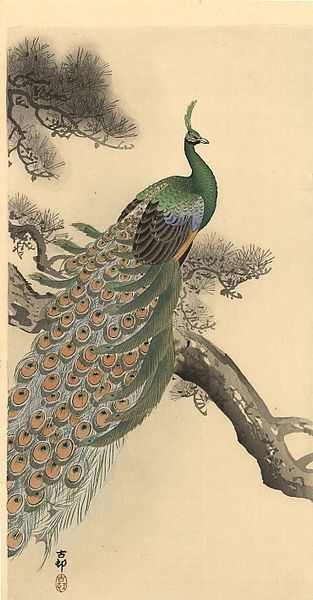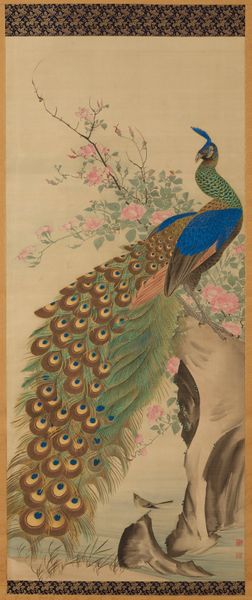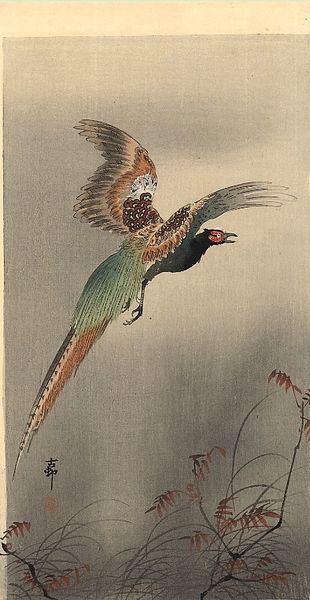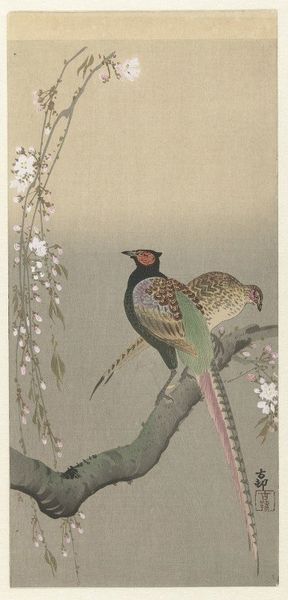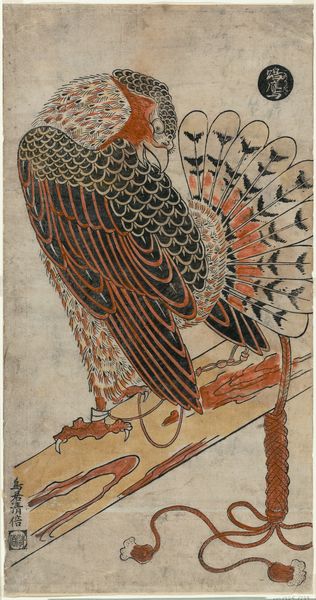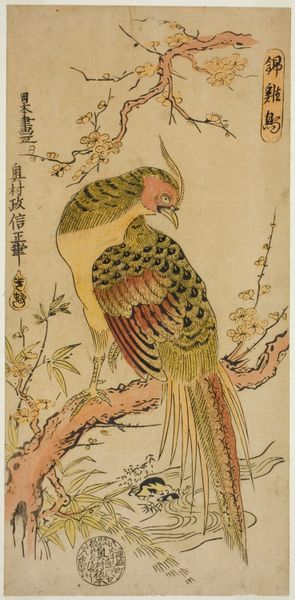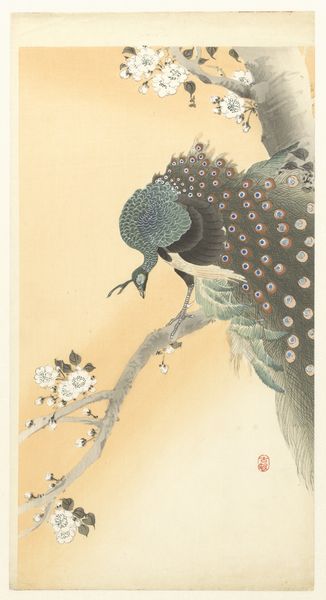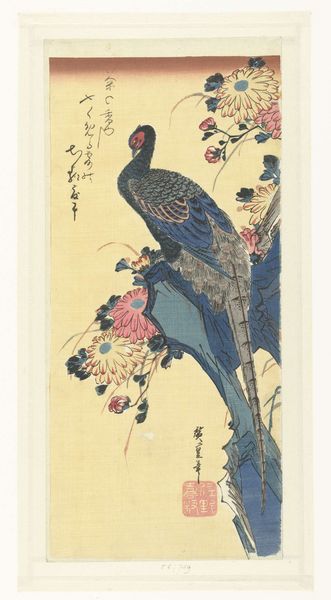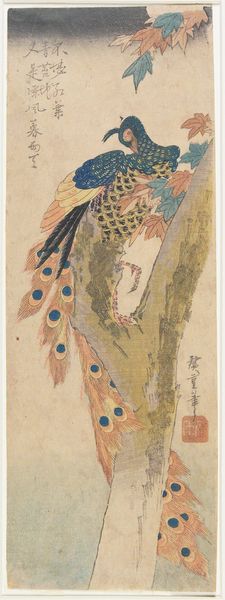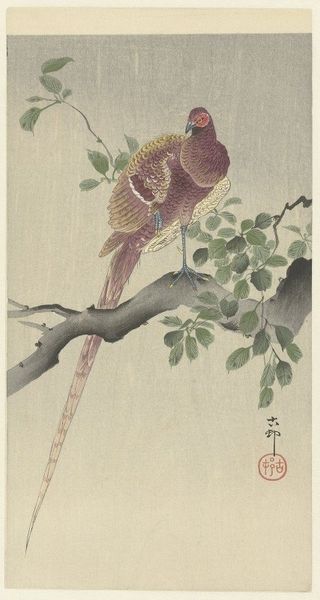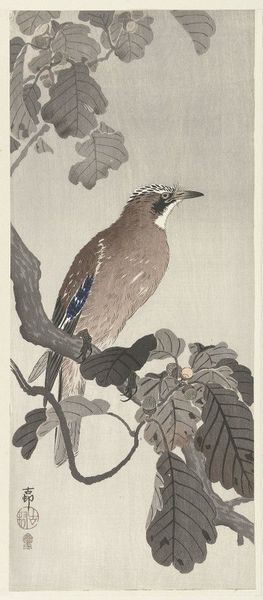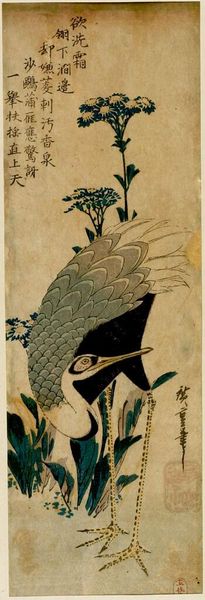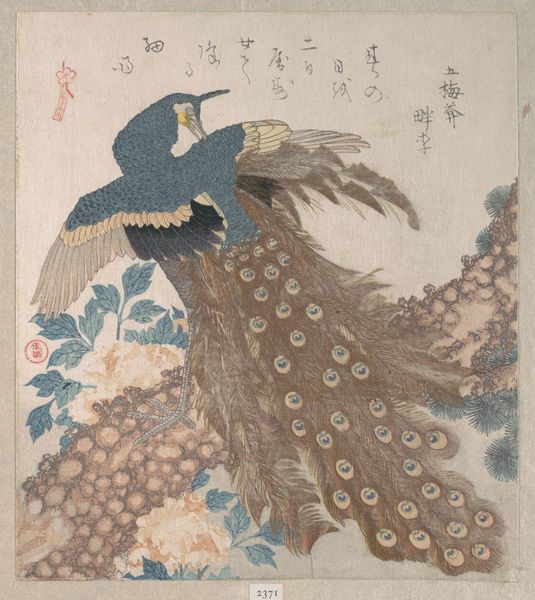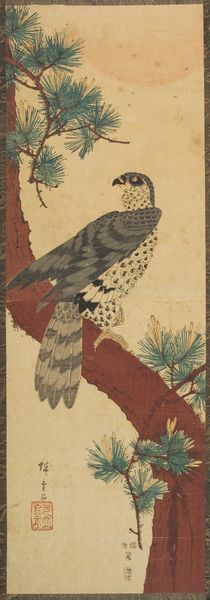
Copyright: Public domain
Editor: This woodblock print from 1910 is called "Two Green Peacocks on the Bough of a Flowering Tree" by Ohara Koson. The coloration of the birds' feathers is really striking. How would you interpret the composition of this piece? Curator: Let us begin with the structural elements. Observe the dominant verticality. The composition is distinctly divided into foreground, mid-ground, and background planes, each contributing to the spatial arrangement. The peacocks, meticulously rendered, are situated on the bough, commanding the viewers' attention through their physical size. The application of color also calls for careful examination; note how the verdant plumage and delicate blossoms interact with the muted backdrop, thus creating a play of visual contrasts. What might you say of the shapes and lines used? Editor: I noticed the repetition of circular motifs in the peacock feathers contrasting with the angular branches. It makes the peacocks stand out, almost vibrating against the background. Is that a technique unique to the Ukiyo-e style? Curator: Not necessarily unique, but certainly integral. The graphic simplification, flattened perspective, and bold outlines contribute to a surface-oriented aesthetic that privileges pattern and texture. Semiotically, one might explore how these elements, through their arrangement and interaction, function to produce meanings related to themes of nature, beauty, and artistic representation. How might the textural qualities further affect one's viewing? Editor: I guess I hadn't considered the texture, but you're right – the smooth background makes the peacocks' feathers seem even more detailed. I appreciate how focusing on the individual elements draws out greater appreciation. Curator: Precisely. Through structural examination and decoding, a seemingly simple naturalistic representation yields layers of sophisticated artistic consideration.
Comments
No comments
Be the first to comment and join the conversation on the ultimate creative platform.
